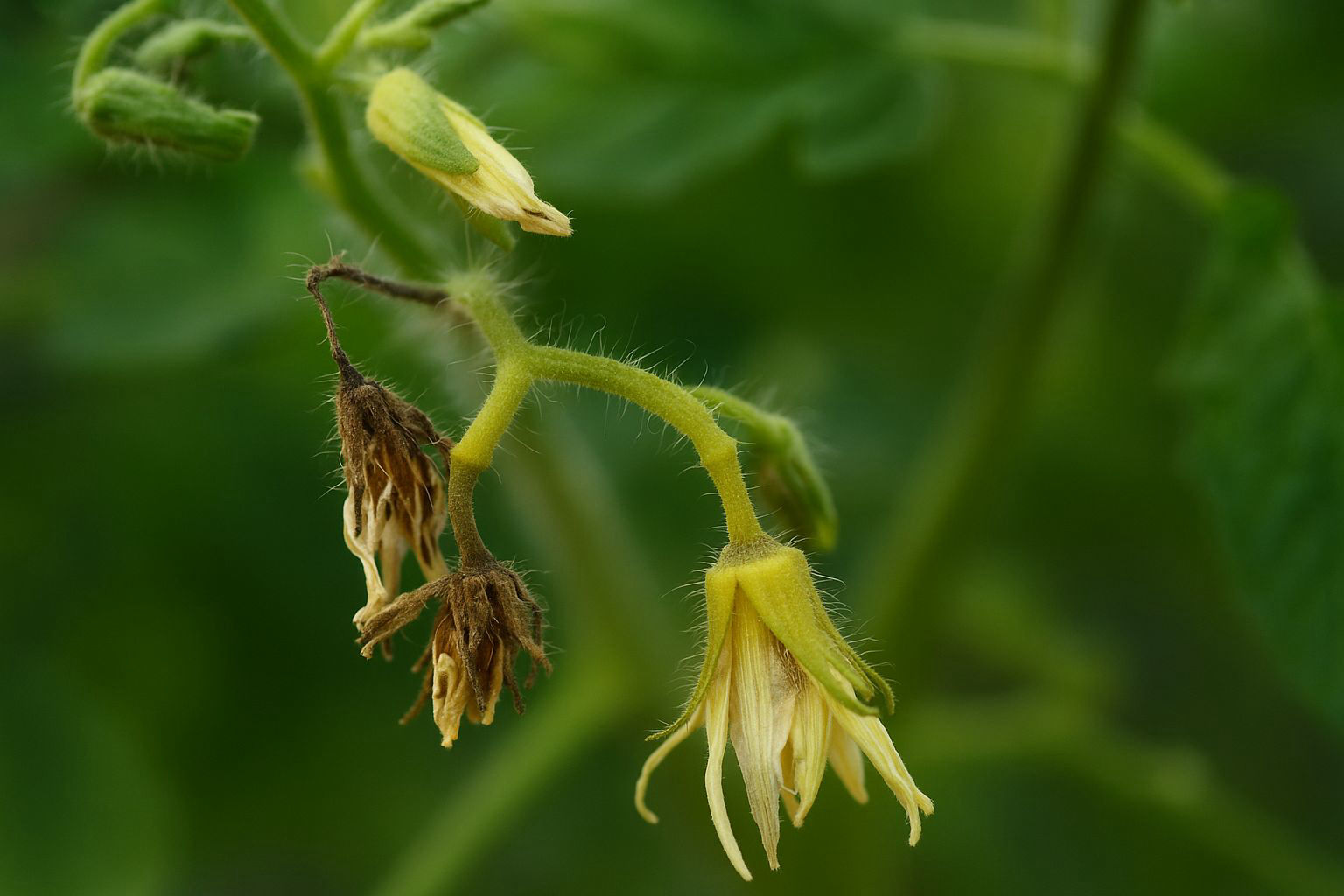Why Do Tomato Flowers Drop in the Rainy Season?
Tomato is a sensitive crop, and farmers often face the problem of flowers dropping during the rainy season. This directly reduces fruit set and yield. Let’s understand the main reasons behind this issue.
Excess Humidity
During the rainy season, the air remains humid. High humidity prevents proper pollination because pollen grains become sticky and fail to reach the stigma. Without pollination, flowers dry and fall.
Temperature Fluctuations
Tomato plants need moderate temperatures for pollination. Continuous rains bring cloudy weather and sudden drops in temperature, which disturb the pollination and fertilization process.
Nutrient Imbalance
Heavy rains often leach nutrients like calcium, boron, and potassium from the soil. These nutrients are important for flower retention and fruit set. Their deficiency leads to weak flowers that drop early.
Disease and Pest Pressure
The rainy season favors fungal diseases like early blight and bacterial wilt. Whiteflies and thrips also spread viruses. These stresses weaken the plant, and flowers are the first to drop.
Poor Pollinator Activity
In rainy and cloudy weather, bees and other pollinators remain inactive. As a result, flowers are not pollinated and naturally fall.
How Farmers Can Reduce Flower Drop
-
Spray micronutrients (especially boron and calcium) to strengthen flowers.
-
Improve drainage in the field to avoid waterlogging.
-
Use disease management practices during high humidity.
-
Support natural pollination with light shaking of plants in protected structures.
By managing these factors, farmers can reduce flower drop and ensure better fruit set in tomatoes even during the rainy season.
